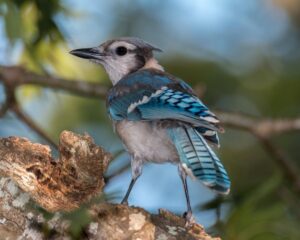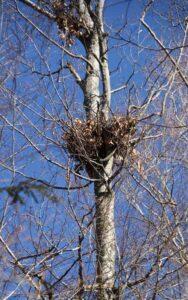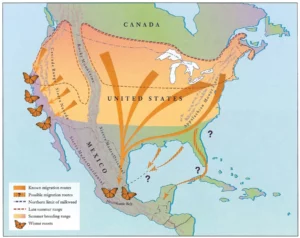As September settles in and we see the last days of summer, it is time to welcome autumn. This is a time to take a reprieve from all the summer activities and welcome cool days. As the equinox approaches, and humans prepare for the shorter colder days to come, so does the natural world around us.
In Naturally Curious: A Photographic Field Guide and Month-by-Month Journey through the Fields, Woods, and Marshes of New England author Mary Holland describes September as a month of “preparation”.
“All our senses can detect a change in the air. There are fewer and fewer hours of daylight, more crickets chirping, fewer birds singing, and berries ripening. Creatures that are tuned in to the seasons to a greater degree than humans are preparing for the months ahead by migrating, laying eggs, breeding, gorging, caching food, and finding shelter.”
Image: David Young
In September we will notice that songbirds are migrating. Even as the forests grow quieter, the familiar Blue Jay will be seen as they will be sticking around to brave the cold New England winter. They will subsist on seeds, fruit, and acorns for the duration of the fall and into the winter. The Loons we see on Lake Auburn throughout the summer congregate. This behavior is known as rafting and is believed to improve their ability to feed before they migrate. Many Loons begin shifting from their freshwater breeding grounds to coastal locations where they will spend the winter.
Image: From Mary Holland’s Naturally Curious
Black bears start building nests, and foraging berries and nuts to prepare for hibernation. Take a close look at American Beech trees in the forest. You may notice signs of bear activity such as claw marks. Will a thinned-out forest canopy you may want to take a look up and see if you can spot the “nests” the bears have been working on, a clear sign of feeding activity. A sign of increased bear activity should warrant caution while hiking in remote areas.
September also marks the start of the Monarch Butterfly migration to warmer climates. They leave New England to migrate south to the Transvolcanic Mountains in central Mexico. A 3,000-mile journey that takes the Monarch’s 2 months to complete. They spend their winter soaking up the warmer climate on oyamel fir trees. As the Monarchs leave, another focal insect in New England remains active and busy this month. The Aerial Yellowjacket. This is the time of year where Yellowjackets no longer need to forage for nutrients for the queen and her larvae, and instead seek out food for themselves. September seems to mark a harvest festival for them to enjoy the fruits of all their hard work before hibernating in the winter.
Image: The eastern population of monarch butterflies overwinters in the forests of central Mexico, with the most prominent migration path following Interstate 35 from Amarillo Texas to Duluth Minnesota. (Credit: U.S. Fish and Wildlife Service)
You may notice that Goldenrods develop galls. The goldenrod gall ball fly causes a gall to grow on the stalk of a goldenrod. In the fall the larvae of the goldenrod gallfly produce glycerol due to the cooling temperatures. Glycerol prevents the liquid interior of its cells from freezing. The galls form in the summer months, but really grow and become obvious this time of year after the eggs laid in the summer hatch and larvae grow. The larvae will continue to develop through the winter and hatch in late spring.
As focal species begin to prepare for winter, and activity dwindles it is important to notice these changes. Getting outside and keeping track of the things that stick out to you in your yard, or on trails, or while enjoying time spent outside can be insightful. Phenology can be more than just the study of changes in the environment through the year, it can be a grounding mindfulness practice that can help you stay connected to the landscape.



